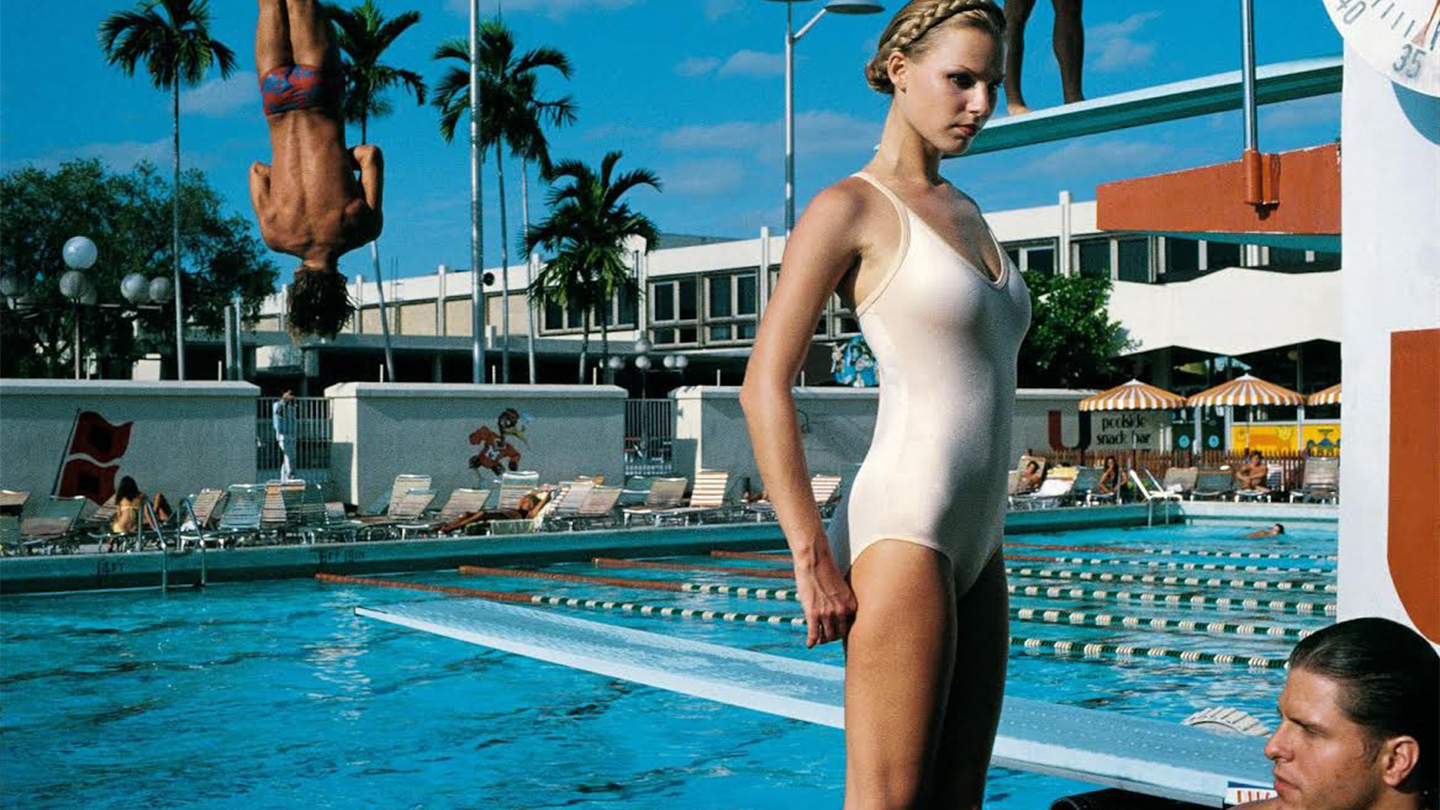“When any model was asked to work with Helmut Newton, it was a great honour, but also a worry,” says Isabella Rossellini. “Going to set for the first time, I had a lot of trepidation, but instead I found a playful old man, full of charm and humour…”
It’s a little strange that Hollywood hasn’t embraced the idea of producing a film on Helmut Newton’s life yet. Beyond his wildly successful photography — provocative enough to earn him the moniker ‘King of Kink’ — Helmut lived a life rich in the sort of drama writers and directors salivate over, from his escape from Nazi Germany to his death on Sunset Boulevard.
With Helmut Newtown The Bad and the Beautiful, we find our first posthumous documentary on the artist. Narrated by director Gero von Boehm — a close friend of Helmut’s — with words from a handful of his favourite subjects — Grace Jones, Claudia Schiffer and, of course, Isabella Rossellini — the film unfolds as a loving tribute to the man behind the camera.
“We met in Paris through mutual friends,” Gero says over the phone from his home in Berlin. “I think it was in 1997 at a dinner and immediately we found each other because we have the same sense of humour. I liked how boyish he was.” On what would have been his 100th birthday, it made sense to tell his remarkable story to a new generation. “His photographs were made for the big screen,” the director adds.
Born to a Jewish family in Berlin in 1920, Helmet escaped internment at a concentration camp as a child after his family fled Germany in 1938 to different parts of the world — his parents to South America and him to Asia. Originally set to travel to China, he stopped over in Singapore where he worked as a high-class male escort, as well as a photographer. But despite his family’s brutal treatment during WWII, Helmut still loved Germany. “There are many Jewish people who say they don’t want to go back to Germany and if they go back, they won’t be attached,” Gero says. “He was very attached to Germany. He liked the Germans.”
Gero, who has previously filmed Helmut for the 2002 documentary Mein Leben for the French-German channel Arte, includes footage of Helmut returning to Berlin in his latest film and remembers this trip fondly. “He was very attached to the city he had to leave in 1938. He showed me the station where he left from. He showed me the street where he grew up.”
By 1940, he’d moved to Australia, where he remained for the next two decades, before moving to London in 1957, after winning a contract to shoot with British Vogue. It was in Australia he met his wife, June, who was also a photographer in her right, working under the name Alice Springs (she even made her own film about Helmut in 1995). He wrote in his 2003 autobiography that “It was a totally different affair from any I’d had with any other girl. All the other girls were really only about fucking. With her there was another dimension.” Their marriage lasted until his death and June played a significant role in making this documentary: donating videos of intimate moments shared between the two that appear throughout.
Throughout his career, Helmut also established close relationships with the models he would return to time and time again in his work. Grace Jones, when interviewed, recalls a story from her early modelling days with Helmut. “He loved my legs, and he is actually the one who got me to like them. Also he was asking me to come regularly to castings. Every time I came, he told me, ‘Oh it’s true: I forgot you have no boobs.’”
But his work and his view on women is never off the hook, either. In one particularly awkward scene — from a French TV segment back in 1979 — Helmet is being interviewed alongside writer Susan Sontag, who criticises his work. Helmet expresses his fondness for women by saying, “J’adore les femmes”, Susan sharply interjects, “Many misogynistic men claim that.”
Gero wanted this film to be rooted in his model’s words: “I thought women first of all have the right to speak about him critically — as Nadja Auermann does.” Nadja presents both sides of the argument: “One could easily say — yeah, his photos are sexist or one might say that he holds up a mirror to how society is.”

As for the political climate and timing of Helmut’s visionary photos, could they have existed in 2020? “His photography wouldn’t be possible at all today,” Gero says. “It was a revolution at the time: a revolution really needed because there was Richard Avedon and Irving Penn but it was just loveliness. As Anna Wintour puts it so nicely, something new was needed. Fashion photography in the 60s and 70s had become a little boring and he refreshed everything.”
For a modern viewer, Helmet’s work still feels powerful. His ‘Naked and Dressed’ series — in which four women are fully clothed in early 80s garb on the right, while on the left, the same four women are standing exactly the same way in nothing but heels — is a classic example of this dichotomy. One might even say they look more commanding without clothing.
Whether it was his iconic celebrity portraits, or his groundbreaking Yves Saint Laurent’s ‘Le Smoking’ tuxedo shot on a desolate street at night in Paris, everything conveyed a certain sexual liberation. Beyond his penchant for nudity, he was a master of extraordinary composition and there could never possibly be another like him. A little perverse perhaps, but visionary? Undoubtedly.
Helmut Newton The Bad and the Beautiful is out now in Germany. A UK release date is still TBD.
